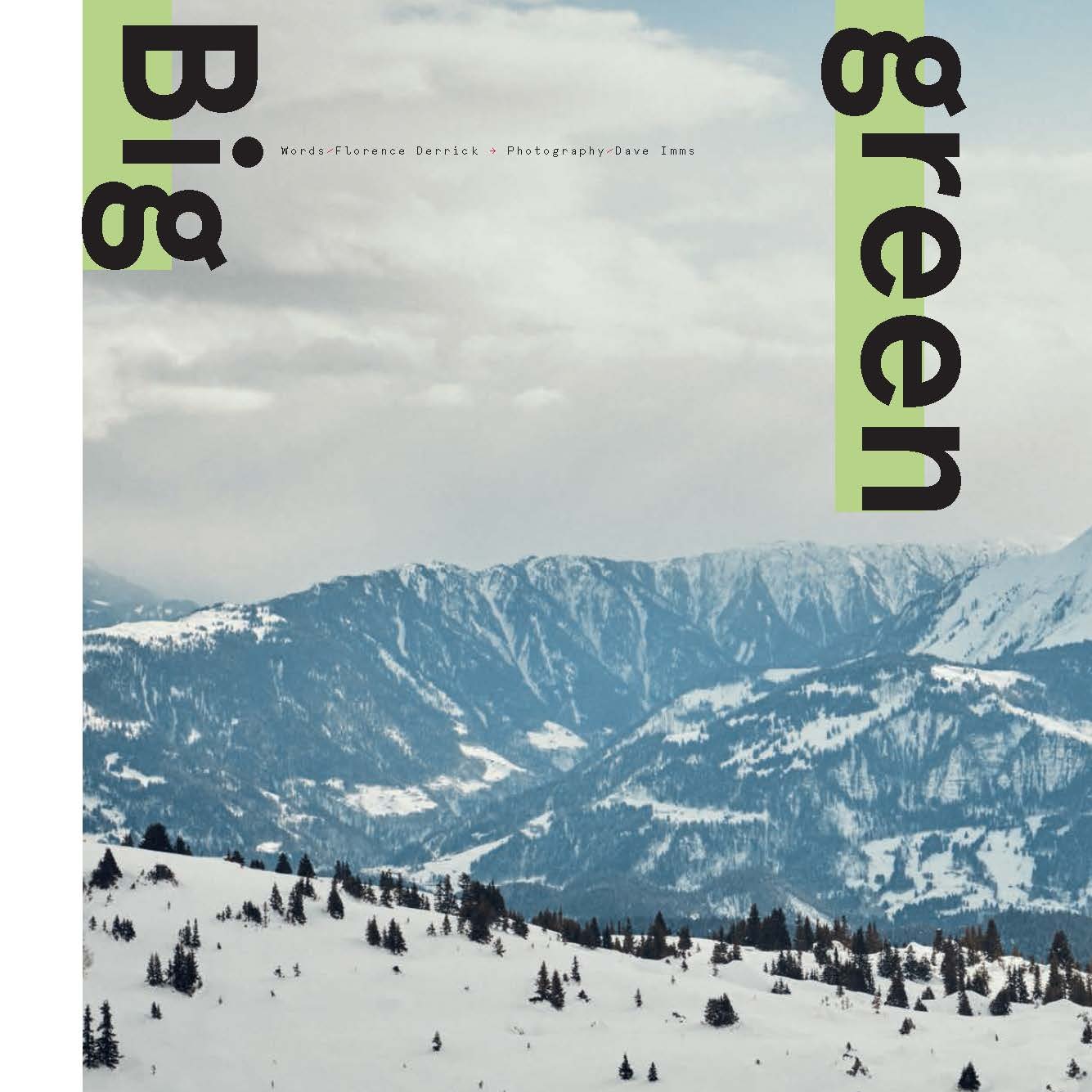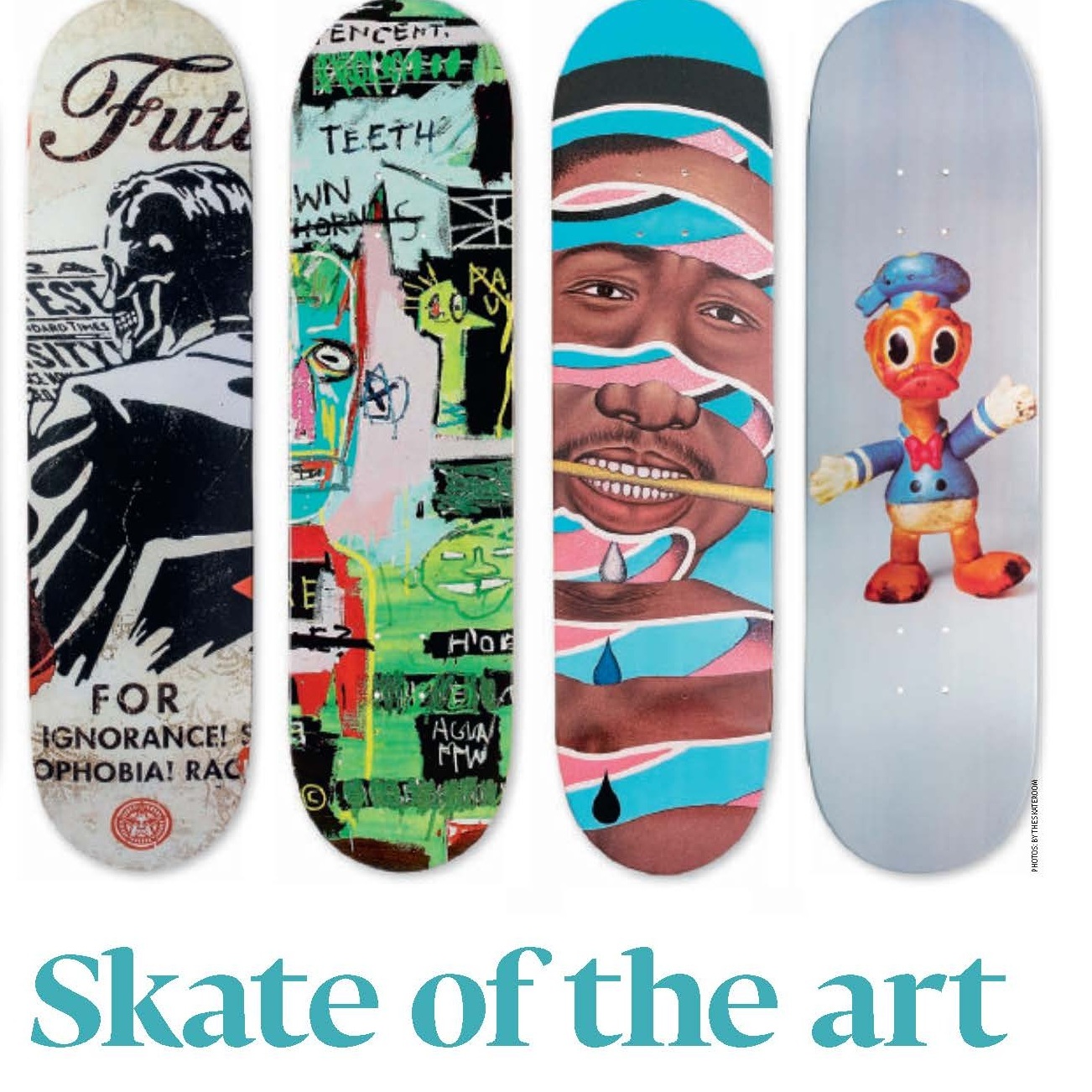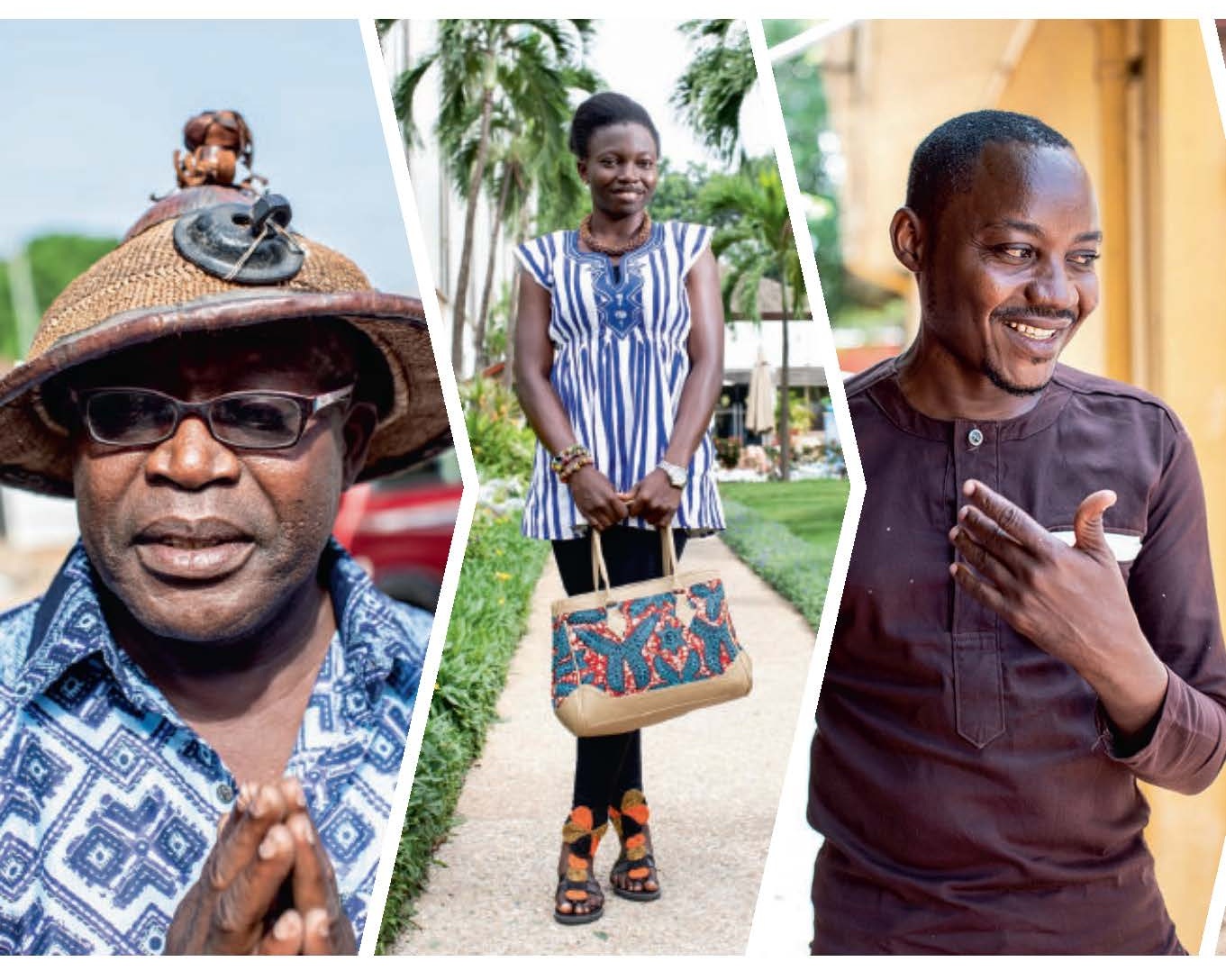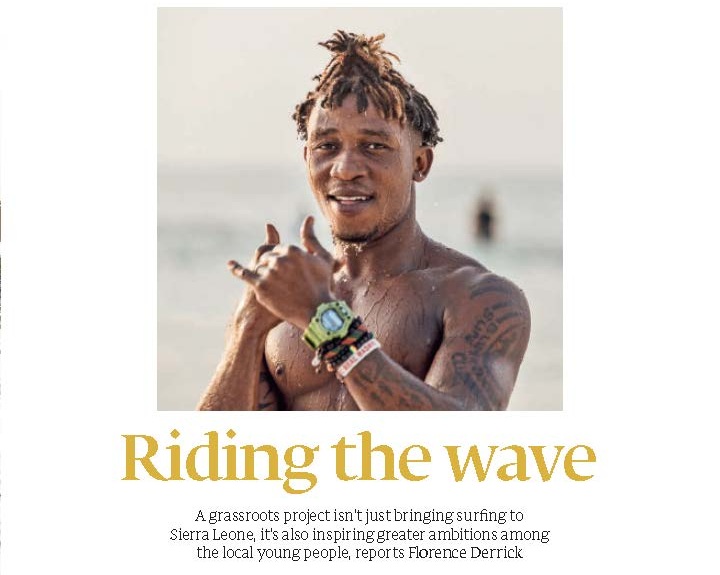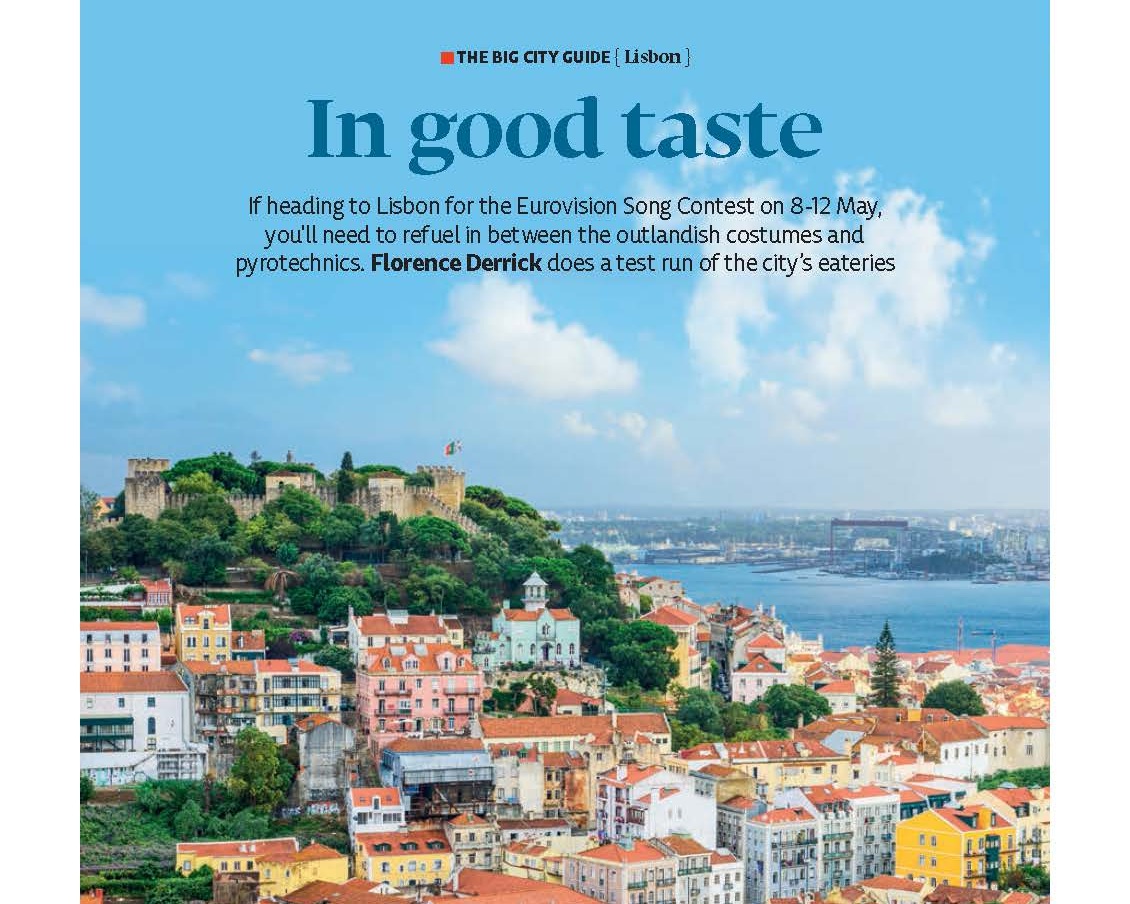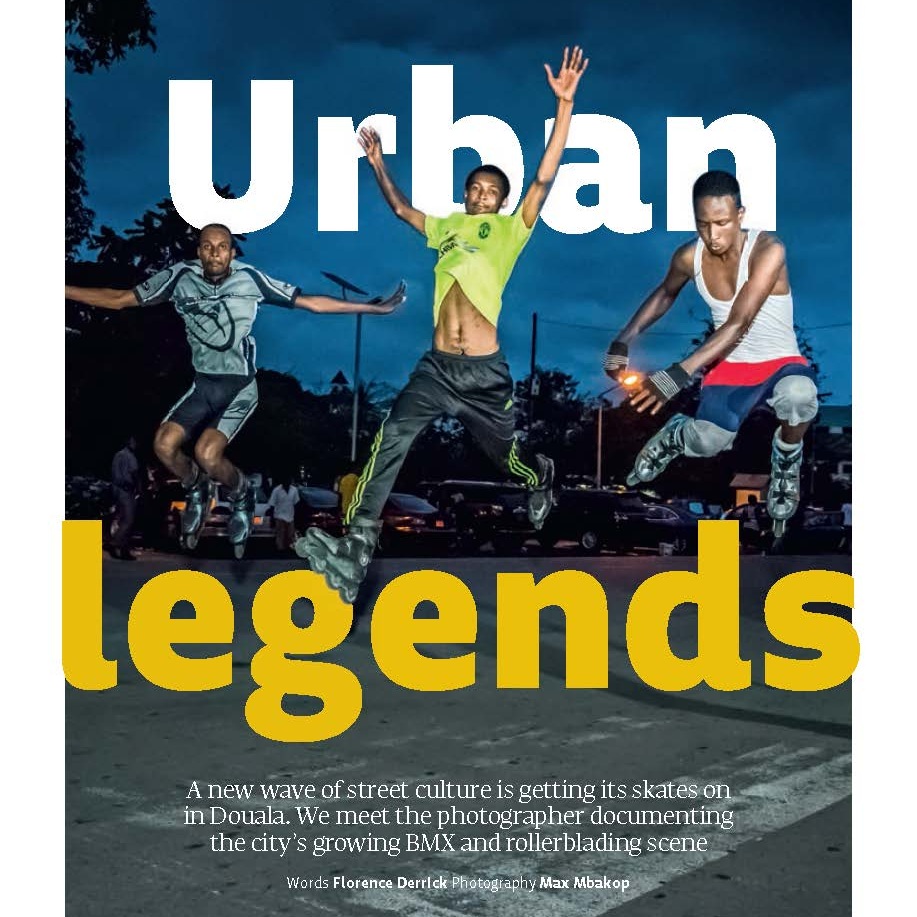The junk architect
Artist Samuel Ansah finds beauty in unlikely junkyard scraps
At the entrance to Accra’s most unusual house, the makeshift wall is bejewelled with colourful ceramic shards, glinting in the sunlight. Look closer and they’re actually the fragments of hundreds of smashed mugs, their disjointed handles mixed with mortar. This is the first of countless weird and wonderful details at the Wheel Story House, the creation of eccentric artist Samuel Ansah, who has built a topsy-turvy mansion entirely from reclaimed wood and junkyard finds.
He began building it 20 years ago, when he collected 500 wooden cable reels discarded by a local telecoms company. “I decided to rescue these empty wheels and turn them into something beautiful and useful,” he says, leading me around the house garden, which is dotted with fabulously Frankenstein-like sculptures that he assembled from the disjointed body parts of statues found in the trash. “I don’t believe in waste. If I can recycle rubbish and help the world, then why not?”
The house’s main structure took just eight months to build, with the help of 15 local carpenters and artisans, but Ansah has been adding to it ever since, building furniture and extra storeys as he sees fit. Local junk sellers bring him a continual supply of materials and he welcomes tourists and local schoolchildren for tours, to teach them the essentials of re-use and resourcefulness.
“A cable wheel is like Lego,” he smiles. “All the elements are there – the segments can build anything.” It’s this ethos that’s leading Ansah and a small team of dedicated associates towards their future plans: to apply the artist’s imaginative methods and materials to fill a crucial need for sustainable and cheap construction in Ghana’s rural, poorer provinces.
The group plans to upcycle discarded junk to build schools and hospital beds where they’re most needed – and, as always, Ansah has a madcap idea to kick things off. As we reach the side of the house, the artist gestures towards a dozen ceramic toilet bowls that are piled up by the fence. “I want to make schools out of toilets!” he cries. There’s no doubt in my mind that he’ll do just that. thewheelstory.org
The plastic weavers
The team at Trashy Bags crafts accessories from garbage to raise awareness about recycling and reuse
In Ghana, an estimated 270 tons of plastic waste is produced per day – of which only two per cent is recycled. But for entrepreneur Stuart Gold and director of production Elvis Aboluah, the discarded drinks sachets that make up the majority of this waste are an opportunity for ingenuity. Gold founded Trashy Bags in 2007 – an Accra-based social enterprise that employs around 60 local people to craft backpacks, laptop cases and multiple-use shopping bags out of unprocessed plastic waste, up to 400kg of which is delivered to their sprawling workshop each day.
“Beyond making bags, we want to make a positive impact,” says Aboluah. It’s important to the social enterprise to raise awareness, by running regular campaigns supported by High Commissions and NGOs. “With adults, it’s difficult to change perspectives, so we’re focusing on kids – making and distributing school bags to educate about pollution. For a lot of them, it’s beyond their imagination that a bit of plastic could take 500 years to biodegrade.”
With a 20kg shopping bag priced at GHC23 (€4.10), the majority of buyers are international and online. “As all our products are handmade, there’s a minimum price point,” says Aboluah, adding that the long-term goal is to protect the local population and environment. “Our biggest ambition is to see a better environment where we can all live without the danger of pollution.” trashybags.org
The natural artisan
Yasmeen Helwani is passionate about uniting Accra’s eco-minded citizens with surrounding rural communities
Laid out on wooden shelves that line white-painted walls, the rows of soap perfume the humid air with lemongrass, citronella and lavender. Jars of viscous, reddish-brown palm oil flank bottles of syrupy coconut oil that’s liquefied in the heat. And behind the counter, glamorous musician and eco-warrior Yasmeen Helwani is unscrewing a jar of body butter and breathing in its earthy, savoury-sweet scent. “Shea butter is one of the best moisturisers in the world, and we have it right here,” she smiles.
It all started some 15 years ago, when Helwani was at university in Canada and a friend sent her a bar of handmade, natural soap. “It made this soft, comforting lather, really bubbly and moisturising,” she recalls. “Since that day I’ve never bought another bar of regular soap.”
She enlisted in craft classes, graduated, and returned to Ghana to launch her eco-friendly brand Green Butterfly, through which she supports remote Ghanaian farmers and artisans with her shop, a mountain spa and events.
As well as selling handmade products from her (almost) zero-waste shop, which has vetoed all plastic packaging, Helwani runs a monthly fair called Open Air Stock Exchange, which showcases the wares of 90 artisans – up from just 10 when she launched it in 2010. “At least 80% of the artisans I work with are women, because in this part of the world, sewing and small-scale crafts are classified as women’s work,” says Helwani. “At first, I was sponsoring them out of my own pocket because some of these women couldn’t even leave the house, because they didn’t have the money.”
Assisting female artisans to empower themselves is just as important to Helwani as educating the younger generation – the driving force behind her Mother Earth Festival in Langma, an hour from Accra (18-19 August).
“We want to bridge the huge gap between rich and poor,” she explains. “We want children from high-end schools who know all about reuse, reduce, recycle to interact with kids in the villages who don’t have access to it. When you leave Accra and see the plastic bags scattered across the savannah, reality hits you in the face. We need to work at education.” facebook.com/1greenbutterfly
The radical engineer
Nelson Boateng has a bold ambition to tackle plastic waste and youth unemployment all at once
An hour’s drive north-east into the Greater Accra Region, the town of Ashaiman makes a stark contrast to Accra proper. Congested, polluted and mostly made up of low-rise shanty houses, it’s also home to Nelplast – a plastic packaging and recycling factory which might just contain the answer to Ghana’s immense waste disposal problem.
Founder and CEO Nelson Boateng believes that innovation can drive drastic cultural change – beginning with himself. Having worked in plastic manufacturing and recycling since the age of 13, Boateng’s company primarily produces shopping bags – which, though made from recycled plastic, are one of the local environment’s main pollutants. “I felt bad because I create the poly bags that go out there to pollute,” he says. “But when we produce the poly bag we don’t wish to see it littering around. I asked myself, what do I do to help this?”
Boateng designed and built from scratch a low-emissions machine that makes building blocks out of a mixture of melted plastic waste (mainly water bottles and sachets) and sand. Operated manually, the machine produces 200 one-square-foot blocks per day, which sell for 3.5 Ghana cedis (€0.63) – a cheap price, due to the abundance of the raw materials used. If he manages to draw enough investors, Boateng plans to purchase automated machines, scale up the production to 15,000 blocks per day – which would recycle 20,000kg of plastic daily – and employ more young people. “If youth unemployment goes down, crime will go down,” he explains. “These are big problems in Ashaiman, but finding plastic waste is easy.” Nelplast currently employs 64 people directly and indirectly supports an additional 500, who collect plastic waste from the surrounding area and sell it to the company. With the right moulds, the durable material could be used to build anything from roof sheets to septic tanks.
And while there’s an irony in continuing to produce plastic bags alongside the far more sustainable building blocks, Boateng is adamant that an abrupt end to plastic production would be short-sighted. “People rely on me to put food on the table – and I know how hard it is when you don’t have something to eat,” he says. Instead, the trick is to show people that waste plastic can be profitable. “The time will come when it’s difficult to find plastic in the environment in Ghana – like what happened with scrap metal. If people can build houses with this waste, or cheaper roads, why would they throw it away?”
Looking ahead, Boateng has fielded interest from recycling facilities in Nigeria, Gabon and India – but his priority is to take care of his own community first. “My dream is to see zero waste and zero unemployment in Ashaiman. This product creates cheaper roads, jobs, and it cleans the environment. It’s three in one – the perfect innovation.” nelplastgh.com
The fashion innovator
Having launched her social enterprise while at university, Mabel Suglo is dedicated to turning trash to treasure
She knows how to use fashion to command a room – but there’s more to Mabel Suglo’s elegant outfit than a keen eye for style. Her beaded sandals were handmade from discarded car tyres, and her jewellery from recycled glass, for her label Dignified Wear, which employs artisans with physical disabilities, and women in rural communities; her tunic was woven by women in the remote Wa region.
Suglo’s childhood visits to see her late grandmother, who had leprosy, planted the seed for the clothes and accessories line. “My grandmother was my heroine. She was stigmatised and marginalised, but she never gave up,” recalls Suglo. “Growing up I saw this inequality in the employment system in Ghana, where people with disabilities move to the cities to seek greener pastures and end up begging on the streets.”
Suglo asked a man who was begging if, instead, he’d be willing to work for her. He told her he was a former sandal maker, and remembering the hardwearing tyre sandals that her grandmother wore – and aware of the surplus of car tyres in landfills across the country – Suglo decided to bring all these elements together and her label was born.
While Suglo plans to invest in automated machines to increase production and her international presence, social mobility in Ghana will always remain at the core of her ethos. “People take ownership of their lives when they are financially free,” she smiles. “It’s a question of just giving them a chance and a platform.” dignifiedgh.com
The startup guru
For artist-innovator Makafui Awuku, plastic waste is a creative opportunity
Last Christmas, this forward-thinking poet, author and social entrepreneur craved one thing above all else. “I wanted an awareness that plastic is not waste,” he says, sat in a shady courtyard in the Accra suburb of Madina where his startup, MckingTorch Creatives, is based. “So I decided to create something to influence people’s behaviour.” Awuku built a towering Christmas tree from 396 discarded plastic bottles strung together and installed it on a major street nearby. It was there for five weeks, with around 30,000 people passing it per day.
“People were astonished by it,” he remembers. “I thought, we can commercialise this, make jobs and solve the plastic waste problem all at once.”
Six months later, Awuku leads a team of five full-time employees, who collect plastic waste from people’s homes and remodel it into a range of homeware products and accessories: rubbish bins, flower pots and laundry baskets are made from bottles, and plastic carrier bags are woven into sandals, bracelets and artworks. Awuku is dedicated to not only addressing Ghana’s plastic waste disposal challenges, but the current lack of employment opportunities for young people in Accra. “If we see waste as a raw material and resource, we can create jobs,” he says, revealing his plans to expand beyond Ghana as a franchise. “We want to change the narrative for Africa by creating a product we can send into the European market – we need to take global action if we want to fix the world’s plastic problem.” mckingtorch.com



